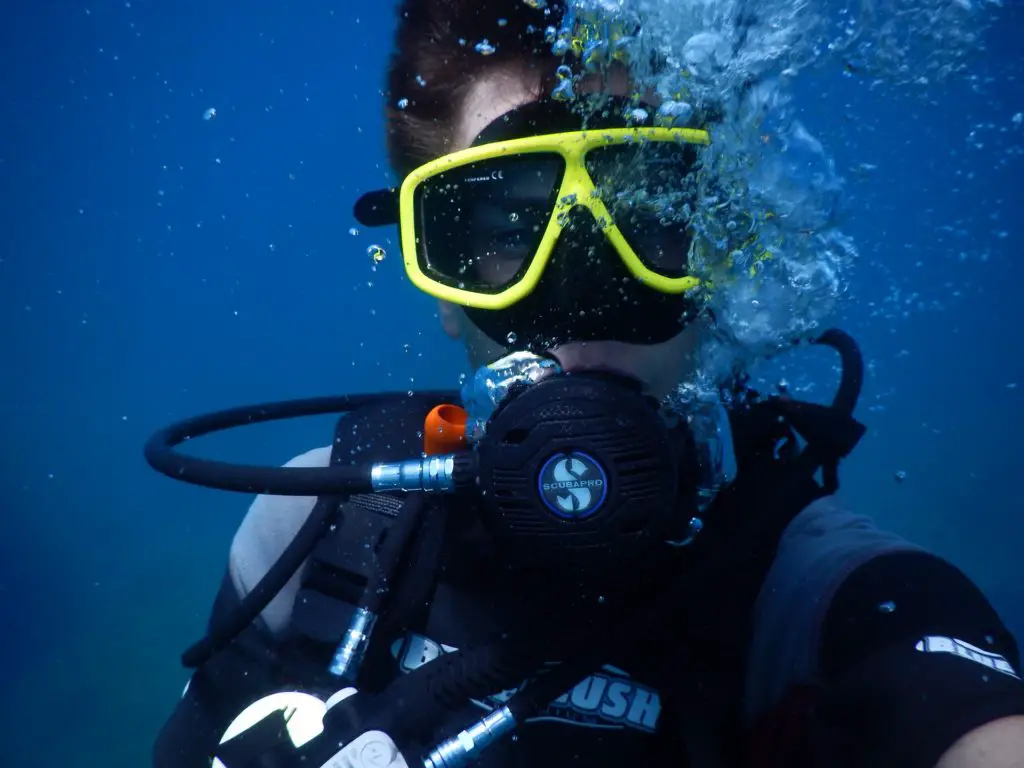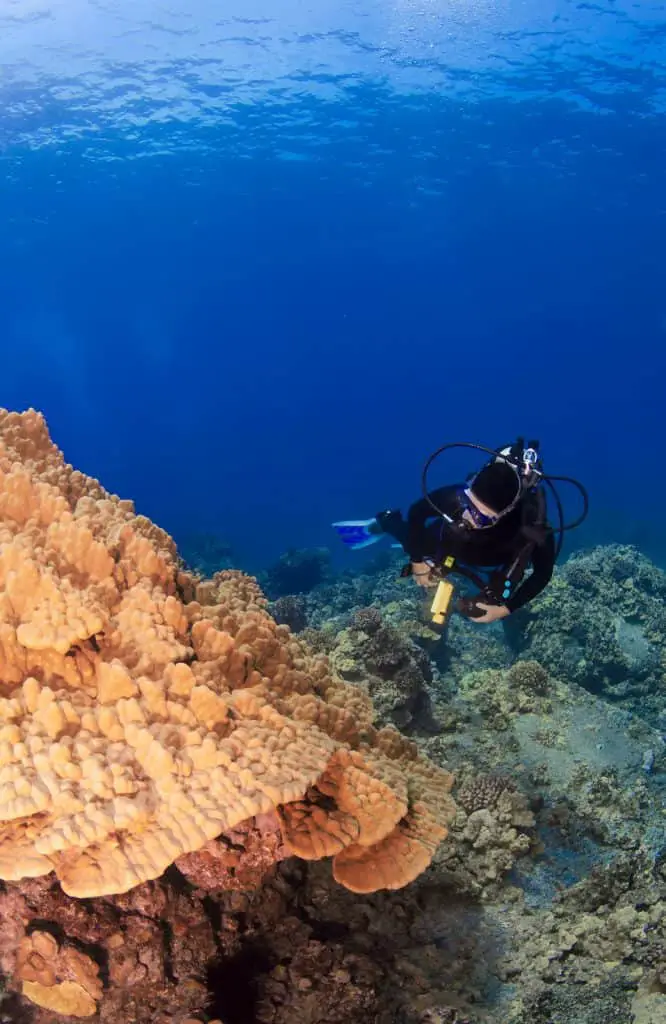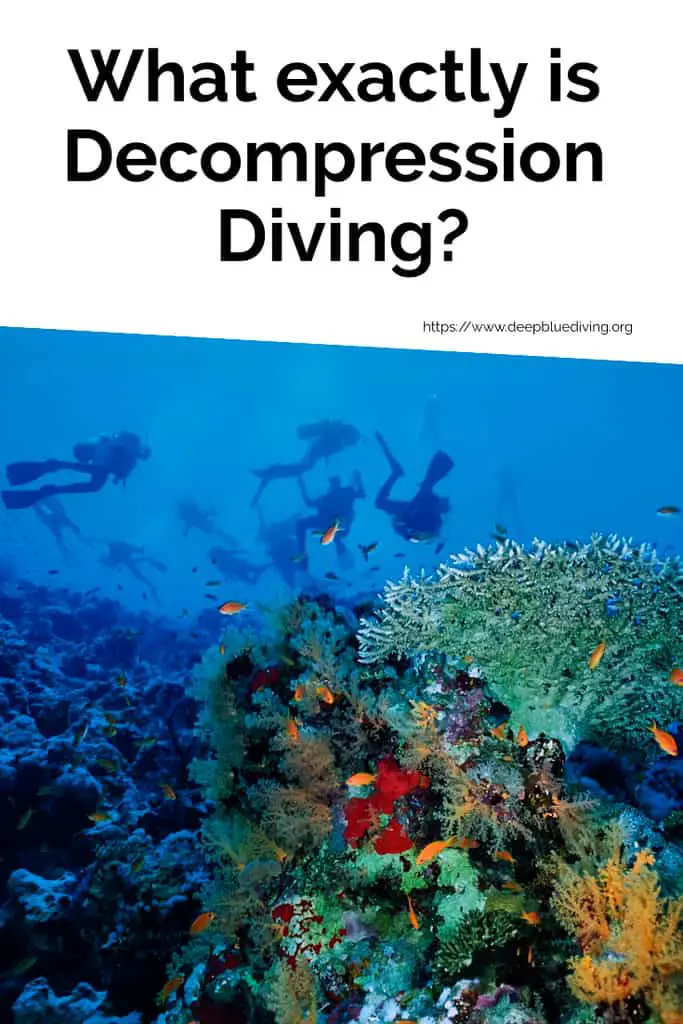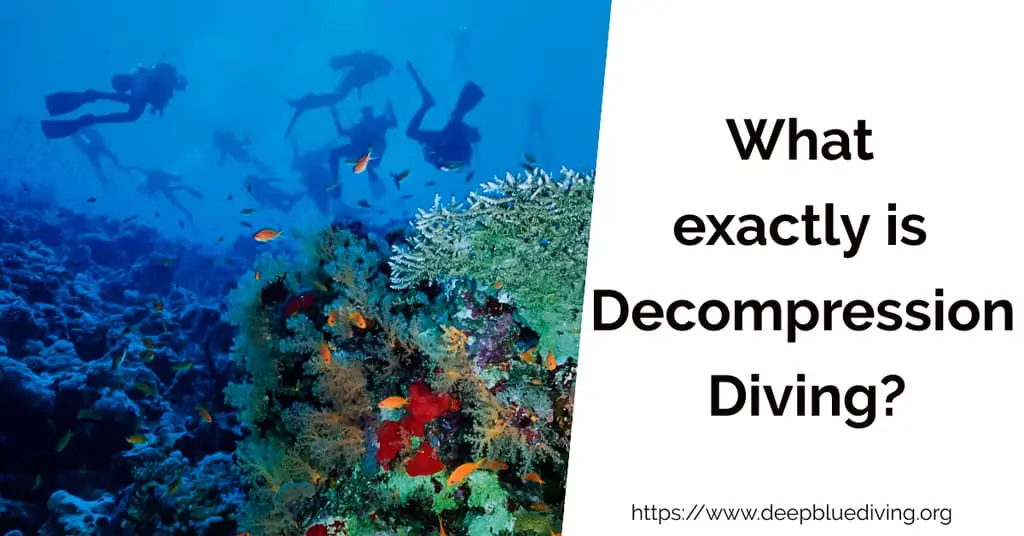Decompression Diving – What is it and do you need to know it?
When a diver gets their basic diving or open water certification, they learn all about no-decompression limit diving.
While a safety stop at 3 m for 3 minutes is recommended, this technically is not a decompression stop. It is designed to add extra safety into the dive for recreational divers.
Divers with their open water certification are not trained for decompression diving (do you need certification to dive?). The primary reason is that the time required for deep dives with long bottom times and decompression stops exceeds the one air tank that you are trained to use for recreational diving.
Decompression diving includes a mandatory stop at a specified depth for a specified time (ranging from 1-15 min). There can be multiple decompression stops on an ascent depending on the total bottom time and ascent rate.
Certifying organizations like PADI even introduce this concept to their recreational divers recommending that any dive over 30m have a half stop of at least 1 minute.
A half stop is a safety stop at half the maximum depth. If you dove a 30m dive, you would stop at 15m for one minute and then again at 5m for 3 minutes. The deco stops at varying depths are there to help your body get rid of excess nitrogen.
While no certified diver who dives under the no-decompression limit bottom time is required to make a safety stop or a half stop, it is recommended to put these practices into use. This will make sure your body can off-gas the nitrogen that has built up in your bloodstream.
Keep in mind that just because you are diving under a no decompression bottom time limit doesn’t mean you are immune to decompression injuries and illness.

What is a Decompression Stop?
As mentioned above, a decompression stop is a waiting period for a scuba diver towards the end of the ascent. It gives the body a chance to acclimate to the pressure change and to off-gas nitrogen (or helium) that has built up in the tissue.
The depth and length of a deco stop depend on each dive profile. It’s impacted by the length of the dive as well as the maximum depth that was reached as these influence how much time your body will require to reduce inert gases dissolved in the tissue of your body.
You either have to calculate your deco stops based on dive tables or rely on your dive computer to give you the correct length and depth of your decompression stop. Both systems will provide you with the data required to off-gas the nitrogen to avoid decompression sickness (DCS).
A downside to using decompression tables is that you estimate your deco stop parameters based on your planned dive. If you stay underwater longer or dive deeper then your planning is moot and your stop might not be sufficient. A dive table is simply not as flexible to be used for adjustments during the dive as dive computers are.
Should You Avoid Decompression Stop Diving?
Only divers who been trained in deco stop diving should dive this way. Adding stops to decompress diving changes your total length of time in your ascent.
Because an open water certification teaches you that you can get to the surface relatively quickly, most certified divers are not prepared for the length of time it takes to surface on a deco stop.
This means on a decompression dive a diver risks running out of air if they are not properly prepared and follow the guidance of their scuba diving computers.
What is PADI and SSI’s take on Deco Diving?
Organizations like SSI and PADI both offer training for divers who want to dive with long bottom times while avoiding decompression sickness. It is recommended that anyone who wants to experience this technical side of diving go through the training to avoid any risk of injury or death.
What to do when your dive computer warns you of a decompression violation?
If you’re diving and your dive computer starts to alarm you about a decompression violation, you should descend back to the deco stop depth and wait the appropriate time. This is under the assumption that you have enough air to do the decompression stops that the computer is requesting. If you are low on air, your options are limited as to what you can do for a decompression violation.
Most scuba computers will shut down for a maximum of 24-48 hours if you have violated the deco stop. This is to ensure that you have a surface time of at least 24 hours.
That full day of surface time gives your body the opportunity to off-gas any excess nitrogen assuming you have not experienced decompression sickness. If you use dive tables then you can certainly cheat and risk serious illness and damage from scuba diving.
PADI Emergency Deco Protocols
PADI trains divers on emergency decompression protocols. Under their training, their recommendation is that if you ever exceed the new deco limit by up to five minutes, then make an eight-minute deco stop at 3 m. After that do not dive for six hours to avoid any chances of decompression sickness.
If you exceed the deco limit by more than five minutes than you need to make a 15-minute stop at 3 m and not dive for at least 24 hours.
Prepare Diligently before your Dive!
It is always wise to consult your scuba diving decompression table before diving multiple times, even if you have a diving computer. This is so you can make sure you know your maximum bottom time and your excess nitrogen levels.
Knowing this without the aid of your computer can ensure that if your computer fails you still don’t put yourself in danger. Remember always round up when estimating bottom time.

How to practice decompression diving?
To practice decompression diving, you need two diving computers. You will want to change one of the dive computers to the “very conservative” setting and leave the other scuba computer is set to the “normal” settings. Dive within the maximum depth that your certification allows you.
You will want to let the very conservative setting dive computer going to decompression mode. Your normal setting computer should not have exceeded the no-decompression limit dive time at this point.
You will follow the deco stop limits set by the very conservative computer to practice a decompression dive. Follow the dive profile and never violate the decompression limits.
Anytime you’re practicing in decompression dive you should always be under the supervision of a trained diving professional or dive instructor. This will help ensure that if anything goes wrong, you have expertise available to help guide you through the new experience.
Having a diving instructor with you while you practice decompression diving will also give you the confidence you need to execute the decompression stops correctly.
Remember not to try deco diving without an instructor or certification on hand. Decompression diving takes extensive experience. Your safety and life are more important than extra bottom time. With that in mind keep on diving and enjoy your no-decompression limit dives.
Share It on Social Media!
Can we please ask you for a small favor? Could you please share this article on social media by using the image below? We appreciate your help!


